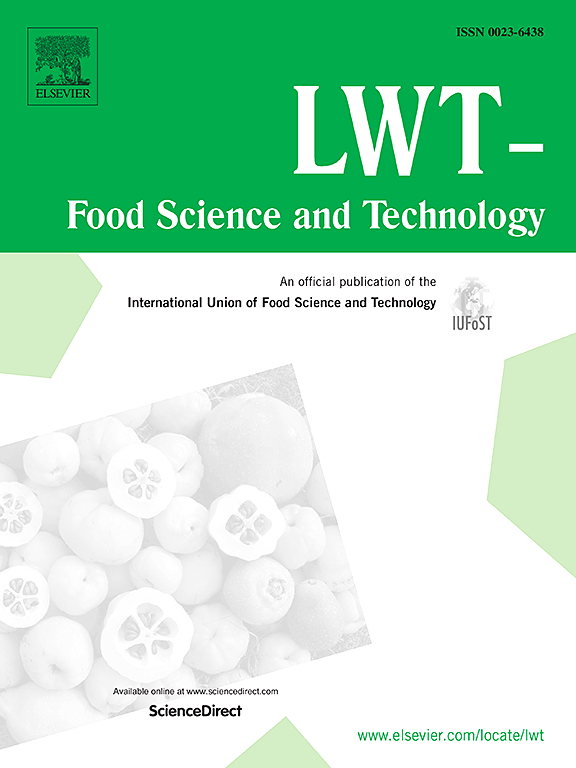Comparative analysis of drying methods for fresh in-hull walnuts: Impact on sensory quality, physical and chemical properties and flavor characteristics
IF 6
1区 农林科学
Q1 FOOD SCIENCE & TECHNOLOGY
引用次数: 0
Abstract
The quality of dehydrated products, including physical, nutritional, and sensory attributes, is influenced by the drying method used. However, the effects of different drying methods on walnuts are not yet clear. To investigate a better drying method for fresh in-shell walnuts, five drying methods (natural drying, hot air drying, vacuum freeze-drying, vacuum drying, and microwave drying) were analyzed and compared for their effects on the sensory quality, physicochemical properties, and flavor characteristics of walnuts. The results indicated that, at the sensory level, the microwave drying group and the vacuum freeze-drying group were closer to fresh samples. In terms of physicochemical properties, vacuum freeze-drying had the highest protein content (21.41 ± 0.73 mg/g) and total phenolic content (212.08 ± 2.06 mg/g), with better antioxidant activity (84.11 ± 0.88 %) and optimal rehydration performance (90.61 %). Samples dried with hot air and microwave drying had more volatile compounds, resulting in better overall flavor quality of the walnuts. Compared to the microwave drying group, the hot airdrying group had the highest content of amino acids and fatty acids, emitting a pleasant baked aroma. A total of 47 volatile compounds were identified by gas chromatography-ion mobility spectrometry (GC-IMS), including 16 alcohols, 12 aldehydes, 8 ketones, 7 esters, 1 furan, 1 ether, 1 acid, and 1 aromatic hydrocarbon. OPLS-DA analysis identified 15 volatile flavor compounds, including 5 esters, 6 alcohols, 2 aldehydes, 1 ketone, and anisole. In summary, all five drying methods can alter the flavor of walnuts, and the drying method for walnuts should be appropriately selected based on different storage requirements and processing methods to create better products.

求助全文
约1分钟内获得全文
求助全文
来源期刊

LWT - Food Science and Technology
工程技术-食品科技
CiteScore
11.80
自引率
6.70%
发文量
1724
审稿时长
65 days
期刊介绍:
LWT - Food Science and Technology is an international journal that publishes innovative papers in the fields of food chemistry, biochemistry, microbiology, technology and nutrition. The work described should be innovative either in the approach or in the methods used. The significance of the results either for the science community or for the food industry must also be specified. Contributions written in English are welcomed in the form of review articles, short reviews, research papers, and research notes. Papers featuring animal trials and cell cultures are outside the scope of the journal and will not be considered for publication.
 求助内容:
求助内容: 应助结果提醒方式:
应助结果提醒方式:


